Only Machu Picchu has this compelling combination: An Incan stronghold in the most beautiful, sacred mountain setting; an ancient hideaway kept secret for four hundred years; and one of the world’s most over-touristed stops — all rolled into one place, outside of Cuzco, Peru. Perfecto! Let’s go!
Introduction and Location
Machu Picchu is an Incan fortress set high in the Andes Mountains at 7,990 feet (2,290 meters). This site was a royal estate with a citidel and small town to support it. Machu Picchu was constructed in a high elevation “valley” between two mountain peaks and easy to defend from invaders. The town of up to seven hundred people was largely self sufficient with fresh water springs and terraced garden farms.
Machu Peru is nestled between two mountains, Machu Picchu and Huayna Picchu. This explanation is lifted from Wikipedia, Machu Picchu: “In the Quechua language, machu means “old” or “old person”, while pikchu means either “portion of coca being crunched” or “pyramid, pointed multi-sided solid; cone”.[15] Thus, the name of the site is sometimes interpreted as “old mountain” That has a nice tourist brochure veneer: “Old Mountain.” However, Machu Picchu really means: “old folks chewin’ on the coca again.” I have been there twice. You need coca leaves, the source of cocaine, just to get up there and thrive.
The Machu Picchu is a perfect location for a citadel. The site has a commanding view down two valleys and a nearly impassable mountain at its back. It has a water supply from springs that cannot be blocked easily. The hillsides leading to it were terraced, to provide more farmland to grow crops and to steepen the slopes that invaders would have to ascend. The terraces reduced soil erosion and protected against landslides.[51] Two high-altitude routes from Machu Picchu cross the mountains back to Cusco, one through the Sun Gate, and the other across the Inca bridge. Both could be blocked easily, should invaders approach along them.
Every other travelogue starts with pictures of Machu Picchu itself and the majestic setting. We will get to the eye candy pictures of awesome Machu Picchu, which almost all readers have seen. Here is a dramatic photo form one hundred years ago taken by Hiram Bingham during his first 1911 expedition (see below – ole Hiram here was the first Western to get his mitts on Machu Picchu)

First lets focus on the details which is a difficult assignment. Machu PIcchu: What is it and how did it get there?
History
The Machu Picchu building date appears to match up with the reign of two great Inca rulers, Pachacutec Inca Yupanqui (ruled 1438–1471) and Túpac Inca Yupanqui (ruled 1472–1493). Pachacutec was the 9th Inca ruler who founded their empire with conquests in the Cuzco Valley and beyond. Pachacutec is usually credited as the founder of Machu Picchu. By the way: yes, Tupac Inca Yupanqui is the primogeniture (first) Tupac after which all subsequent Tupacs borrowed his name and fantastic heritage — think Tupac Amaru, the Peruvian hero who lead a native uprising against the Spanish; and of course, Tupac Shakur.
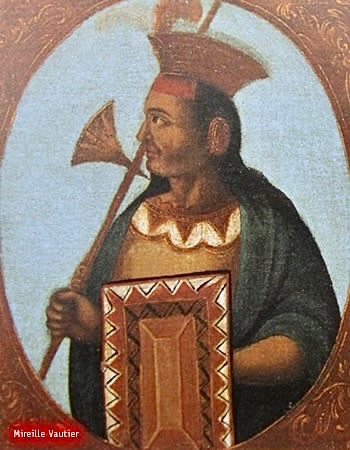

Machu Picchu was constructed around 1450 (recent research pegs the date at 1420. This earlier date, if confirmed, would throw off the historic timeline. The site was used for only eighty years. Machu PIcchu was then abandoned, and hidden to avoid detection by the invading Spanish. This strategy worked for 400 years. Machu Picchu was hidden from prying Western eyes until “discovered” by American meddler and busy-body, Hiram Bingham in 1911. Bingham marveled at the site, took some samples and photographs, and left. The section below is taken from Wikipedia, “Machu Picchu”:
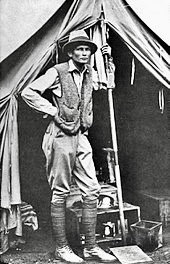
“Bingham returned to Machu Picchu in 1912 under the sponsorship of Yale University and National Geographic again and with the full support of Peruvian President Leguia. The expedition undertook a four-month clearing of the site with local labor, which was expedited with the support of the Prefect of Cuzco. Excavation started in 1912 with further excavation undertaken in 1914 and 1915. Bingham focused on Machu Picchu because of its fine Inca stonework and well-preserved nature, which had lain undisturbed since the site was abandoned. None of Bingham’s several hypotheses explaining the site held up. During his studies, he carried various artifacts back to Yale. One prominent artifact was a set of 15th-century, ceremonial Incan knives made from bismuth bronze; they are the earliest known artifact containing this alloy.[40][41]”
Although local institutions initially welcomed the exploration, they soon accused Bingham of legal and cultural malpractice.[42] Rumors arose that the team was stealing artifacts and smuggling them out of Peru through Bolivia. (In fact, Bingham removed many artifacts, but openly and legally; they were deposited in the Yale University Museum. Bingham was abiding by the 1852 Civil Code of Peru; the code stated that “archaeological finds generally belonged to the discoverer, except when they had been discovered on private land.” (Batievsky 100)[43] ) Local press perpetuated the accusations, claiming that the excavation harmed the site and deprived local archeologists of knowledge about their own history.[42] Landowners began to demand rent from the excavators.[42] By the time Bingham and his team left Machu Picchu, locals had formed coalitions to defend their ownership of Machu Picchu and its cultural remains, while Bingham claimed the artifacts ought to be studied by experts in American institutions.[42]
The Construction of Machu Picchu
It is hard for visitors to stop staring at the panoramic view of Machu Picchu. They forget to move their lower jaw up so the two sets of teeth clench again. Yet if they do and look around the visitors may notice the equally awesome building construction. Incas are renowned for their sophisticated dry-stone walls. They fuse huge blocks without the use of mortar (think no cement or grout) The Incans did not use mortar because the looser fitting dry construction created more flexibility to survive the periodic earthquakes. The large building blocks were commonly twenty to thirty tons, but the largest hunks weighed in at fifty tons. Tons. Fifty tons = 100,000 pounds.
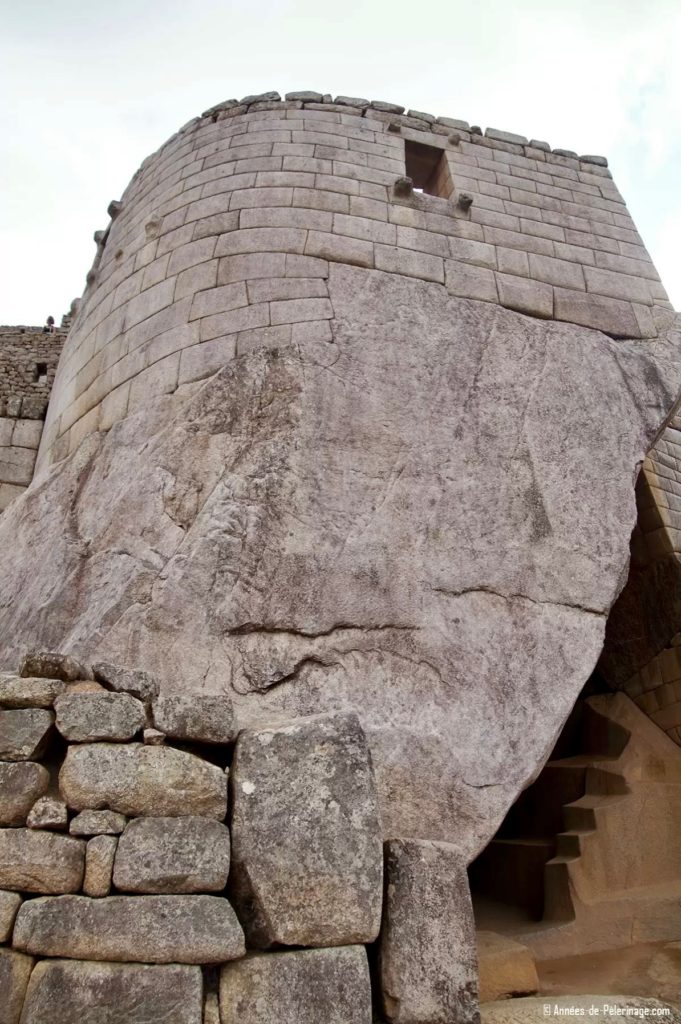
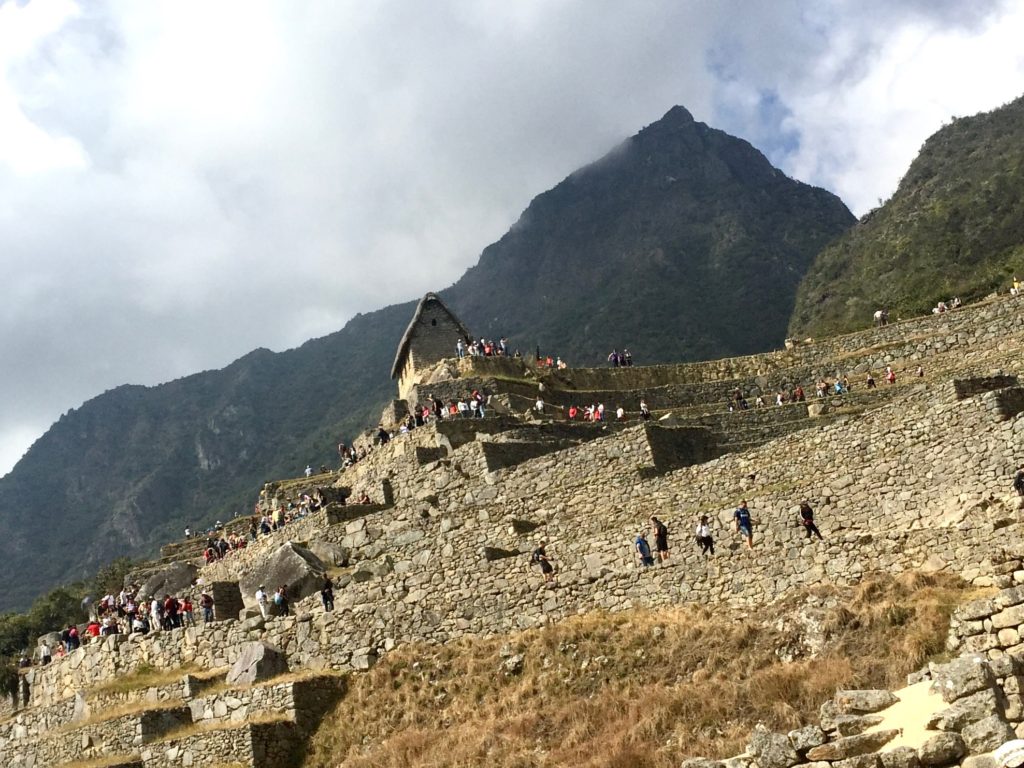
Machu Picchu had its own rock quarry. That was good given the site’s hefty mountain location. Smaller quarry stones were hauled around by lamas, while larger stones were pulled around with ropes and levers. The Inca never invented the wheel as we know it. Hard to believe, but here is the reference cite: https://www.annees-de-pelerinage.com/machu-picchu-architecture-explained/
Almost as bad, the Incas had no hard metal: They did not have steel, iron, platinum, zirconium edged blades – nothing. They cut the stones using bronze tools and even harder stones. You try cutting multi-ton blocks of stone with bronze tools. Actually, the Incas probably pounded the stones into shape and did not really cut them; intriguing, but how do you pound a twenty ton stone into shape?
Religious Significance
Machu PIcchu has numerous temples and ritual structures. With four temples in this small mountain town, it is easy leap to say that Machu Picchu held spiritual significance for the Inca. The most outstanding structures, and site of many sacrifices include the temple carved from a natural rock formation: The Temple of the Condor

The Temple of the Condor in Machu Picchu has its wings carved on a huge rock of the mountain while the head and neck of the bird are carved on the floor as an altar. It is possible that this altar as a “table” was an altar of sacrifices
The other famous temple – and in a big tourist touchstone – is the Temple of the Sun:
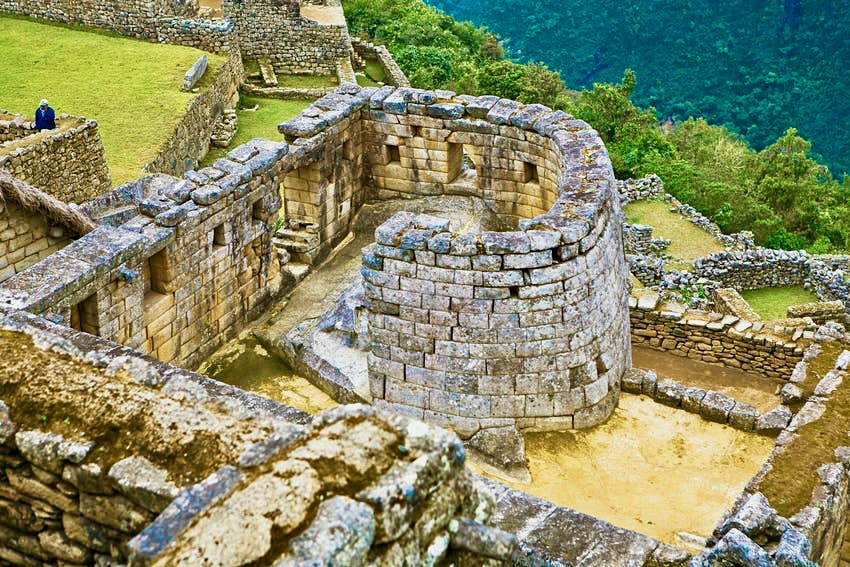
For the ancient Incas, religious worship was centered on the diverse natural phenomena they encountered. The Incas were “pantheistic”, as they had numerous gods. Their world view was “animistic” as Inca myths attributed living qualities to mountains, waters, stars, rocks and caves, weather phenomena and the skies above. The dozens of deities in the Inca’s universe were filled with great significance and symbolic meaning, such as the power to bring luck or misfortune, prosperity or scarcity, life or death.
Even before the Incas, the pantheon of Andean gods was large, and based on the beliefs of each local pre-Inca culture. With the reign of the great Inca king Pachacutec, the sun or Inti, his sister and wife, the moon goddess Mama Killa, and Pachamama (or Mama Pacha), the earth mother, became most important gods of the Incas.
Apperantly, there was human sacrifice at Machu Picchu. There is little surviving information that details such sacrifices at Machu Picchu. Even worse, many sacrificial victims were never given a proper burial. Their flesh and bones were scavenged by animals or just decayed over time.[44] However, at the Temple of the Condor human remains were found. In the small cave under the wings of the condor was discovered a mummy. There is also evidence that servants and vassals were sacrificed to accompany a deceased noble in the afterlife. In reality, though, most of the sacrifices at the Temple of the Condor were non-human: animal, liquid and dirt sacrifices to the gods were more common. This non-human sacrificial tradition continues to this day by members of the New Age Andean Religion which commonly centers on the worship of Pachamama, an “Earth Mother” type Goddess.
In case anything thinks I am blowing smoke about Machu Picchu; saying “Like, what does he know? Watch this:
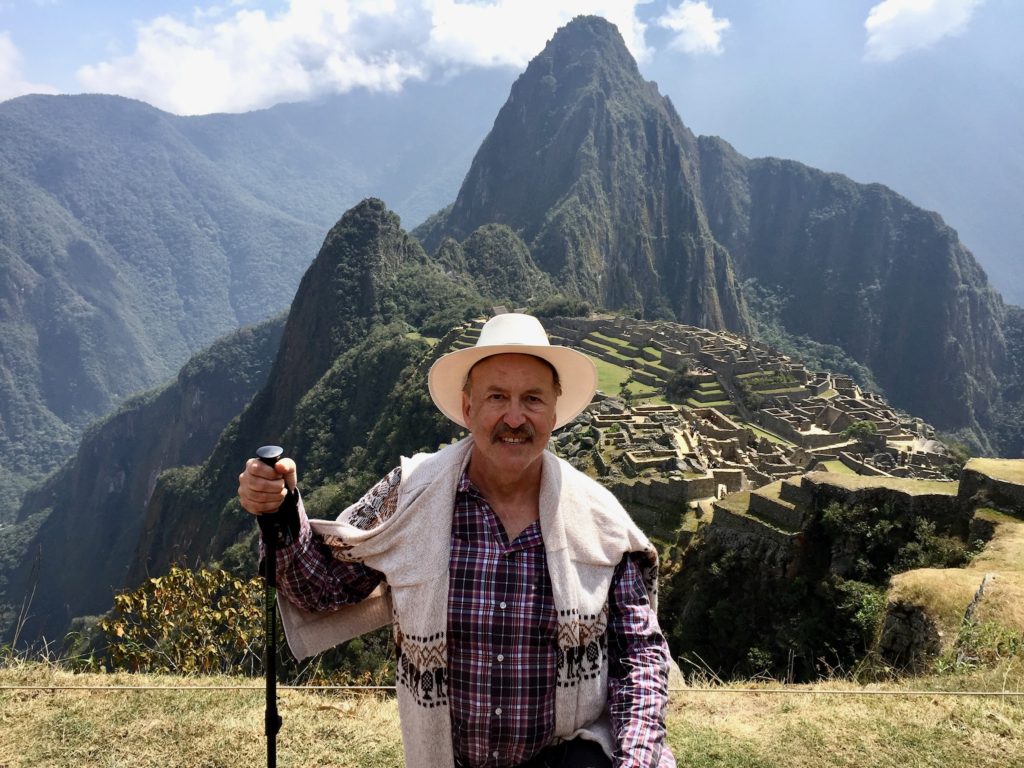
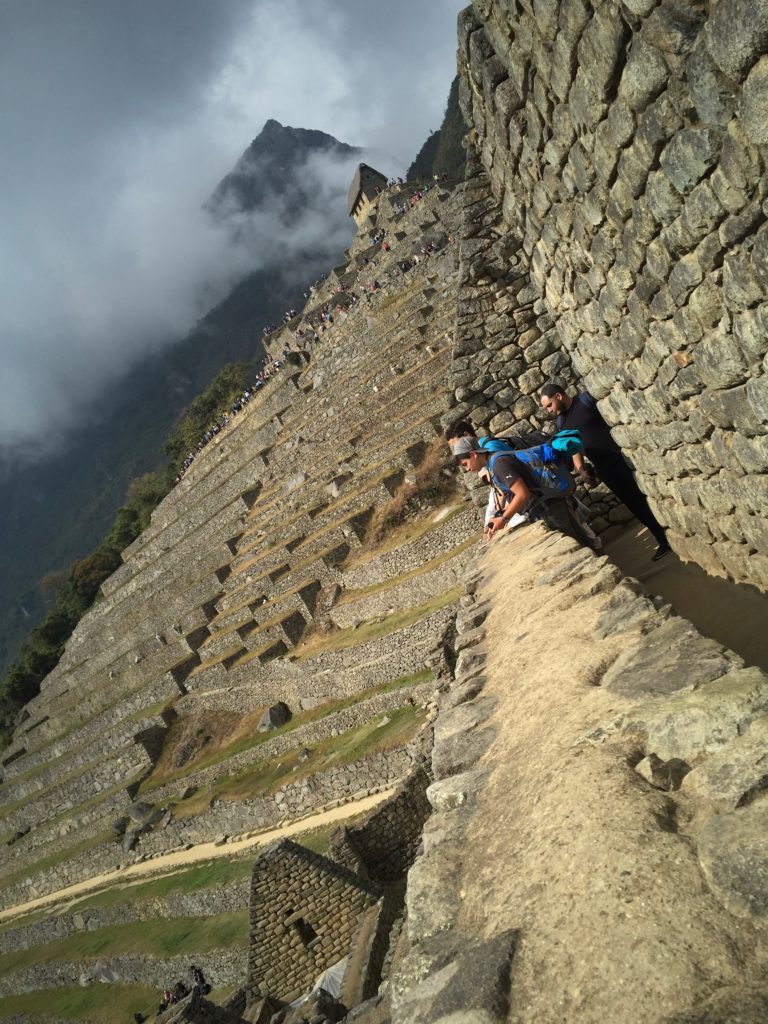
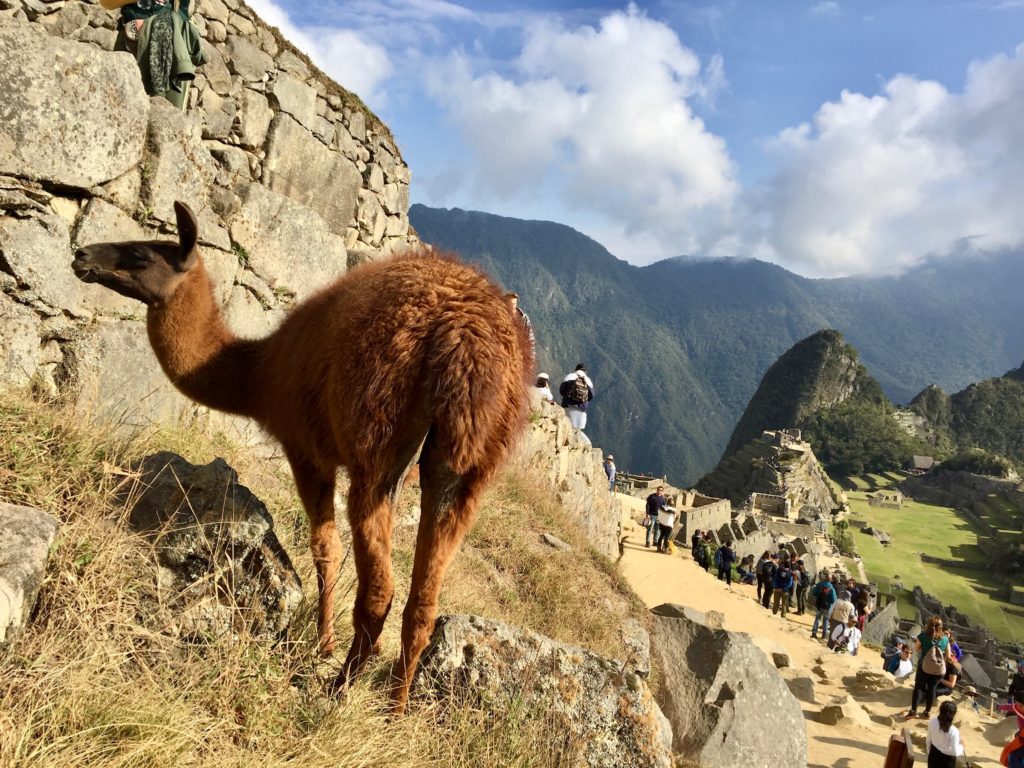

The ancient Incas perfected terraced agriculture with skill, determination, and scientific-agronomy precision. We still marvel at their farming accomplishments (soil scientists or plant biologists always say, “How did they learn how to do that?”) Mountainous Machu Picchu had to be self-sufficient in food. Therefore, terrace farming was a high science and art up there in the Peruvian Andes. The picture below is just a sample of small “side gardens.” Machu Picchu has extensive “fields” of terrace gardens as they were the main source of food for the locals.
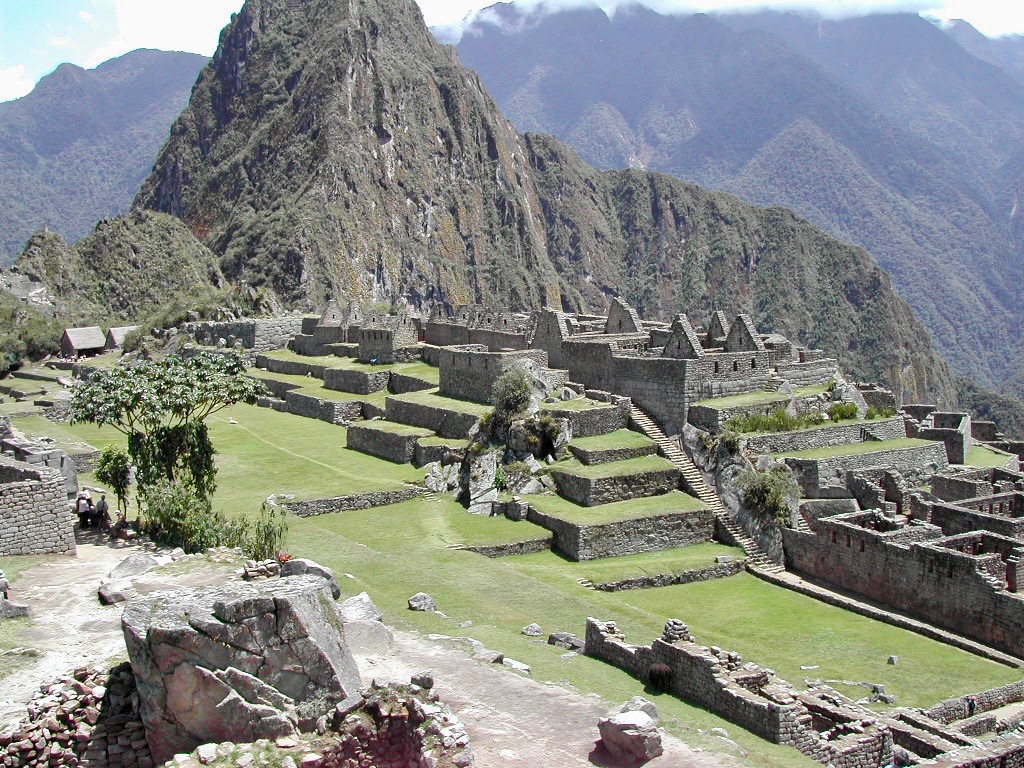
Bonus: At the base of the mountains holding Machu PIcchu is a base-camp town. Officially, and locally, the name of this town is Agua Calientes (warm waters) as the town is alongside Rio Urubamba. The the gringos all call this hamlet Machu Picchu Town and it does cause some mix-ups and confusions. Here are two photos of the misnamed, “Machu PIcchu Town’:
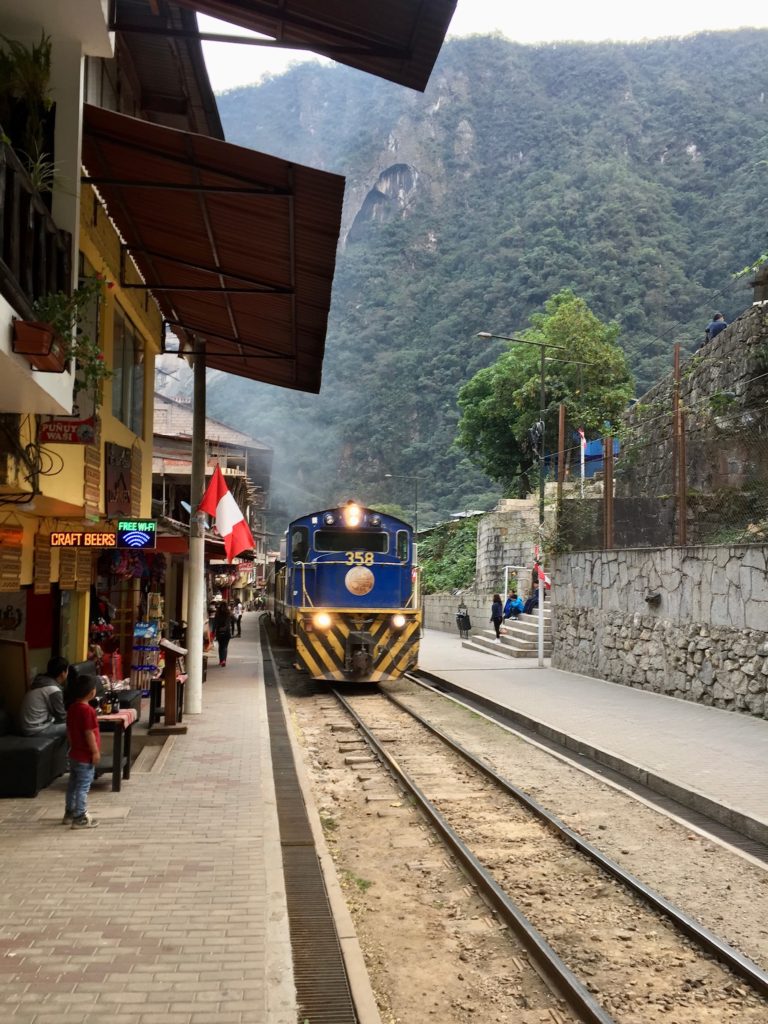
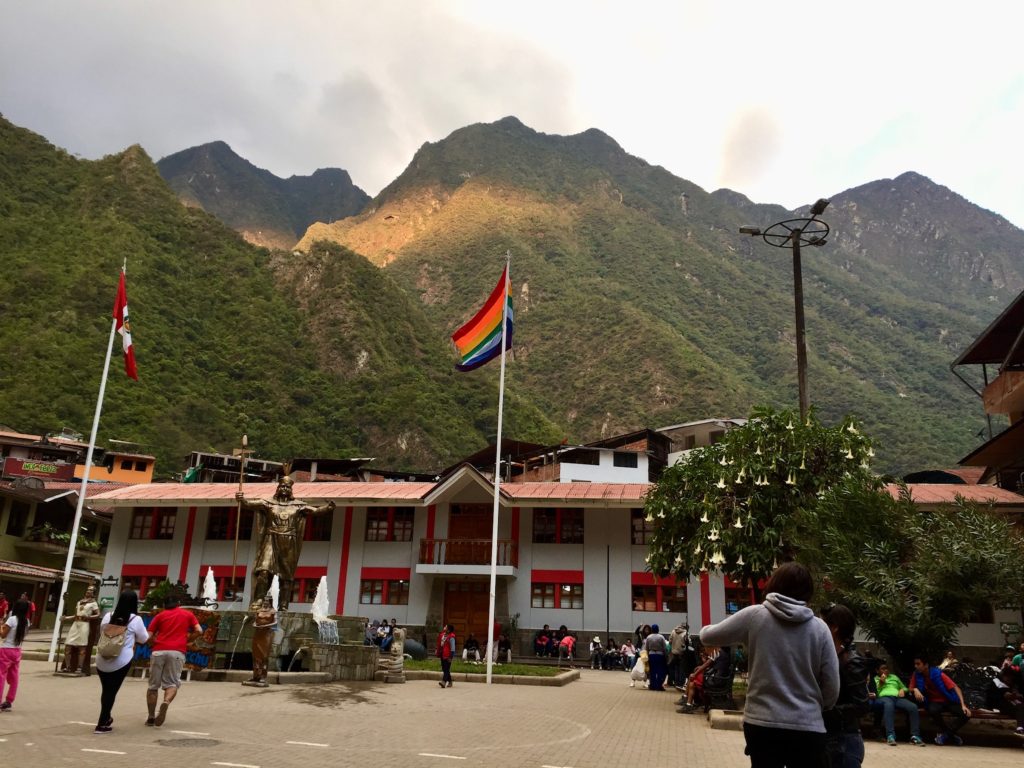
Left: Most visitors arrive in “Agua Calientes” after a breath-taking train ride in a glass-walled railroad car. Visitors can stare open jawed at the snow covered Andes passing them by. This ride is way over priced to gouge the tourists. It is touted (not in official tourist brochures) as the worlds most expensive train ride per mile. As it is a short ride; the financial “ouch” is definitely worth it. Avoid the rip-off train? No, problem: take the three-day mountain hike alternative.
Shameless Plug. Please consider signing up for a FREE subscription to this website which is both a travelogue and literary journal. Notices of new postings, about three new articles a month, will be sent to your email inbox. Note: Your information will never be marketed, sold, or used in any way. The marketing of personal data is a horrible idea.
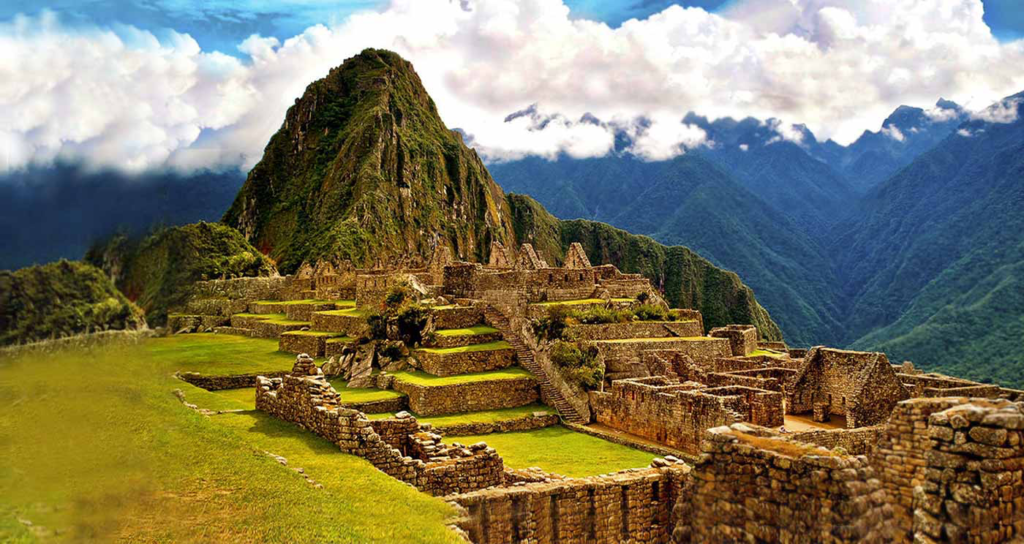
This has always been one of my desired visits. My cousin did a Peru trip to Machu Picchu years ago where she hiked for a few days, each night arriving at a prepared campsite, brought hot tea and dinner, got a good night rest, and got up again to the next backpacking leg of her journey. That story and this blog post has re-inspired my desire for a visit there. I also appreciated the Tupac reference. Certainly learned something there!